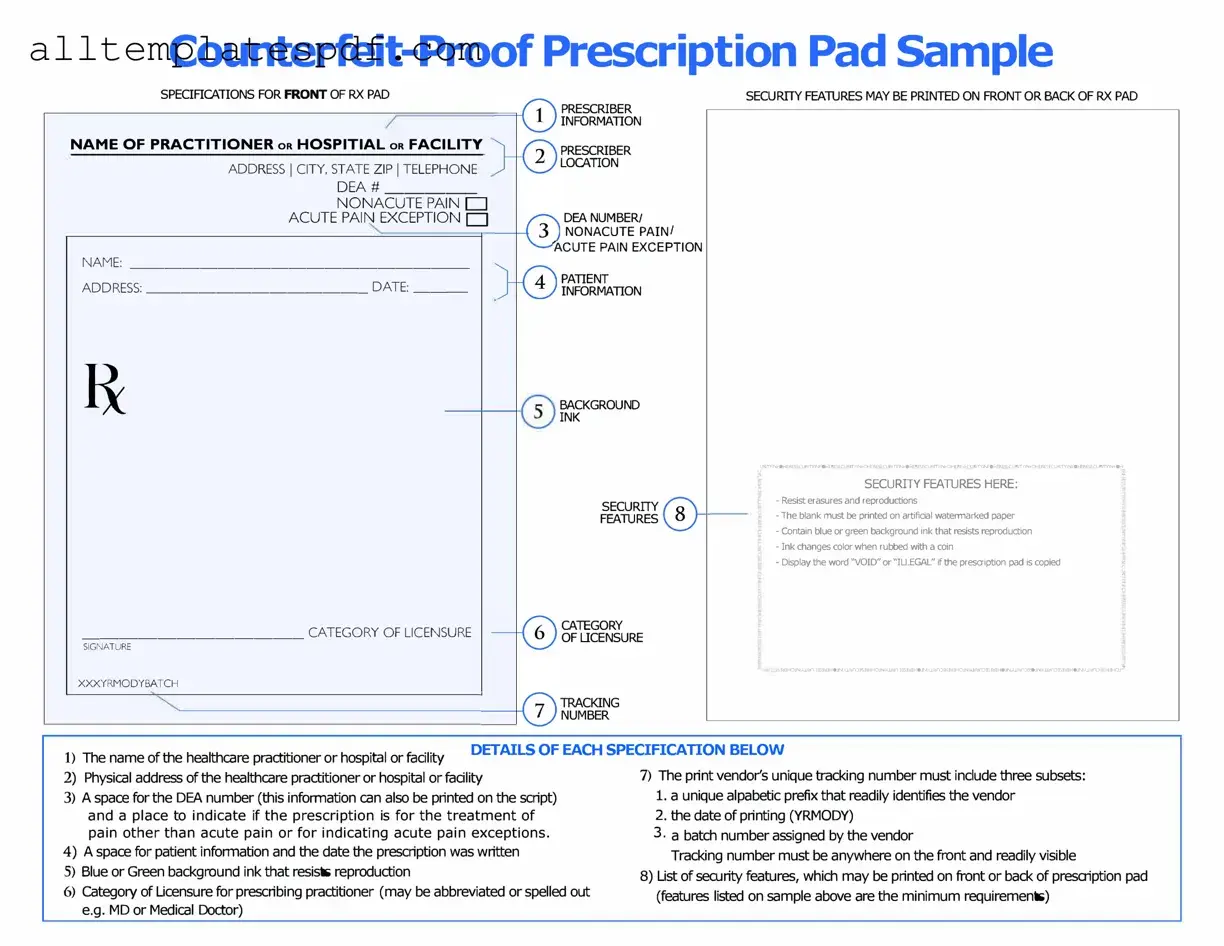When individuals fill out a Prescription Pad form, several common mistakes can lead to complications in obtaining necessary medications. One frequent error is the omission of essential patient information. Patients may forget to include their full name, date of birth, or contact details. This lack of information can delay the processing of prescriptions and create confusion for pharmacists.
Another mistake involves incorrect medication details. Patients sometimes write down the wrong dosage or frequency. For instance, a prescription might specify a medication to be taken "twice a day," but the patient may accidentally write "once a day." Such discrepancies can lead to ineffective treatment or adverse effects.
Additionally, failing to provide clear instructions for the pharmacist is a common issue. Some individuals may use abbreviations or shorthand that are not universally understood. This can result in misinterpretation of the prescription, potentially leading to the wrong medication being dispensed.
Signature errors also occur frequently. Patients may neglect to sign the form altogether or use a signature that does not match the one on file with their healthcare provider. A missing or mismatched signature can prevent the pharmacist from processing the prescription, causing further delays in care.
Finally, individuals often overlook the expiration date of the prescription. Prescriptions typically have a limited validity period. If a patient attempts to fill a prescription after this date, the pharmacist may refuse to dispense the medication. This can disrupt the continuity of care and require patients to return to their healthcare provider for a new prescription.
